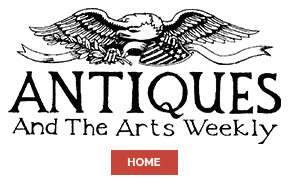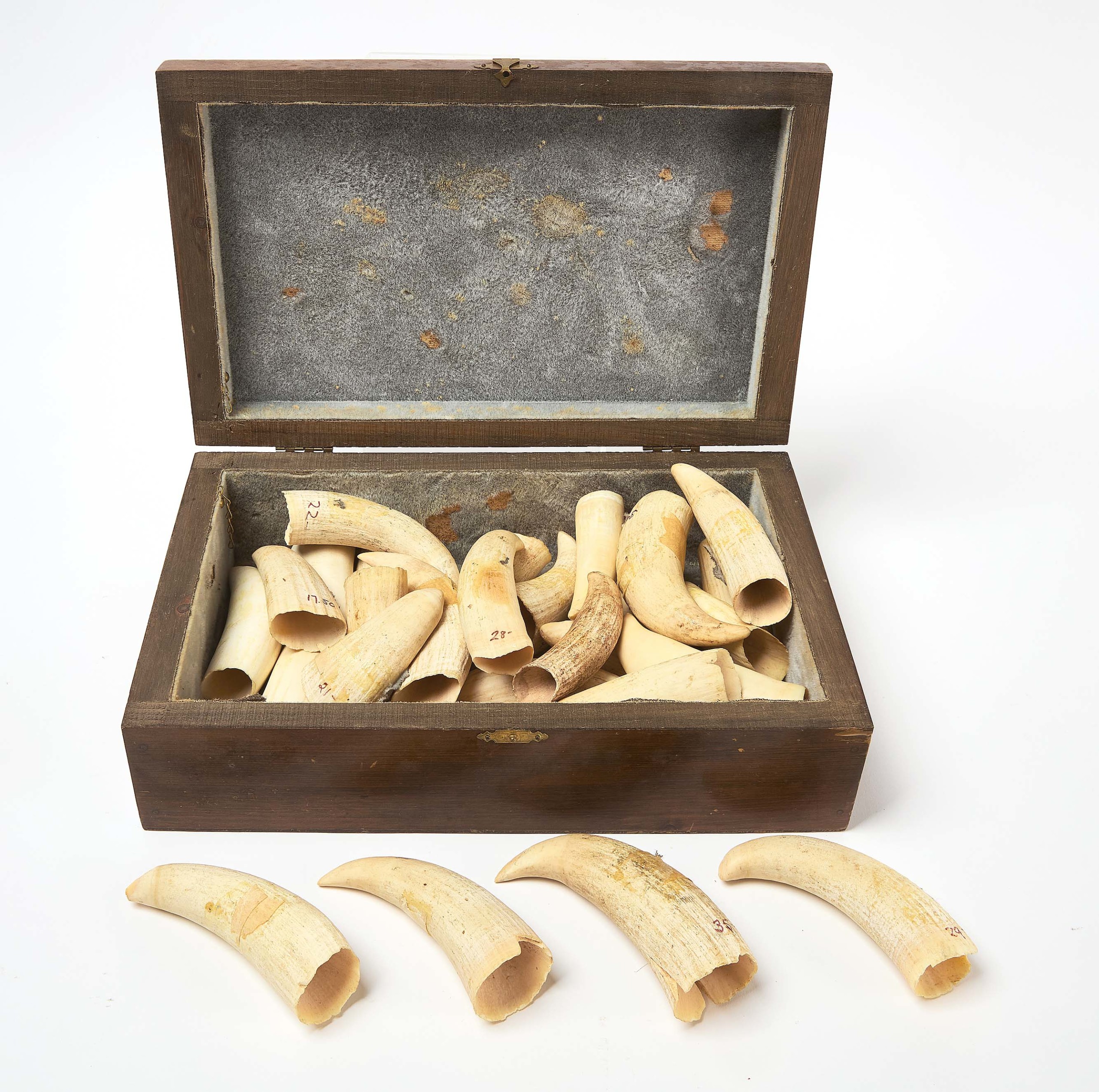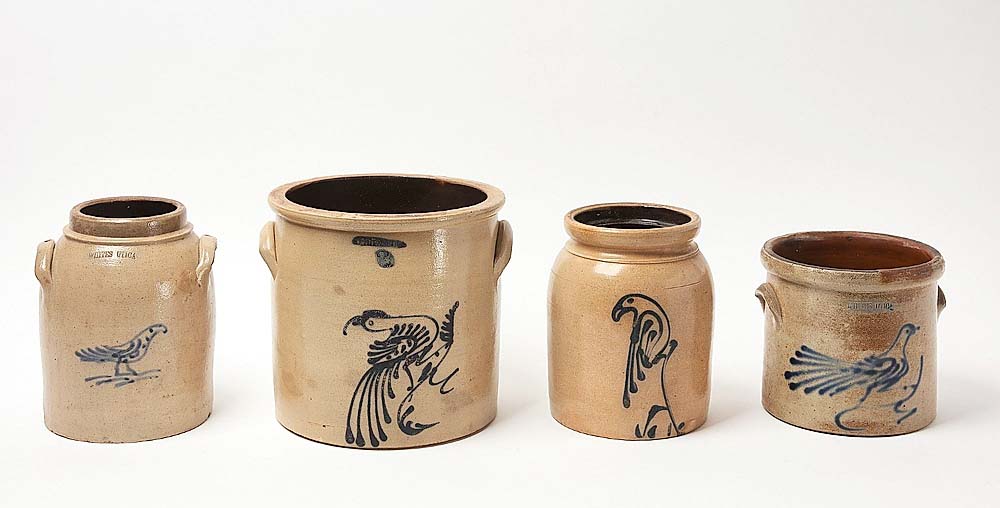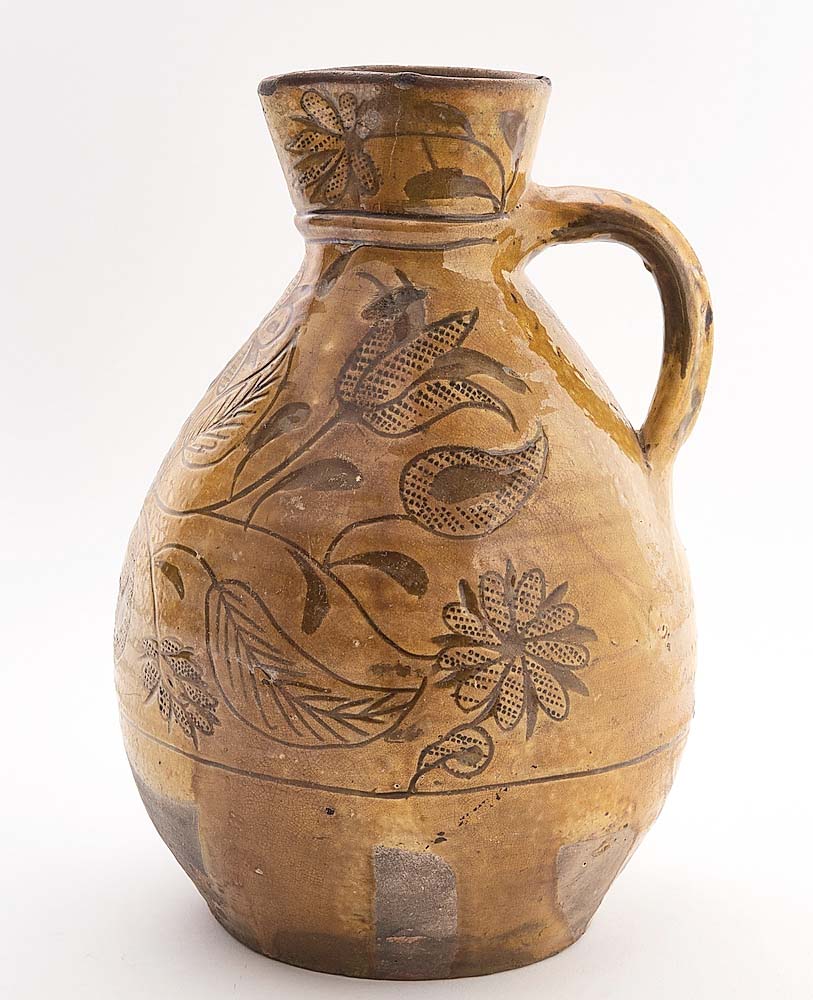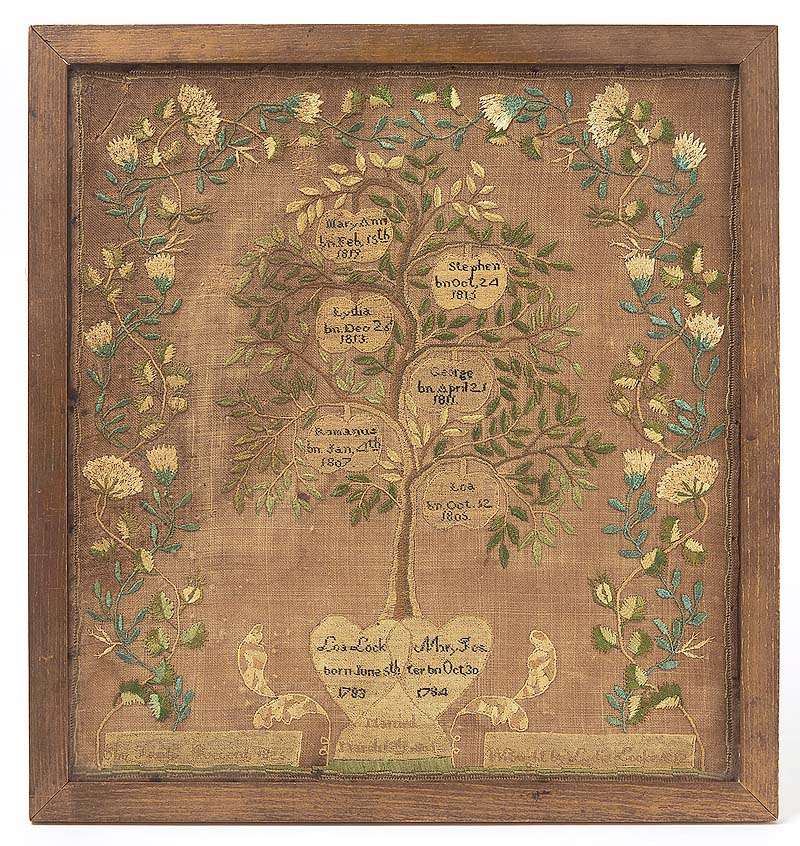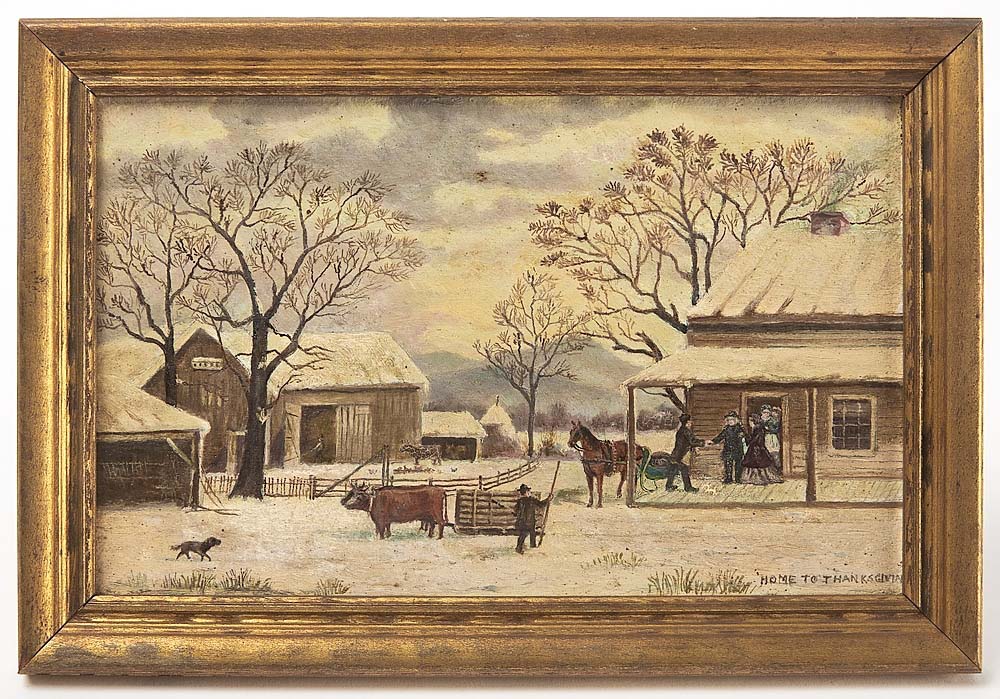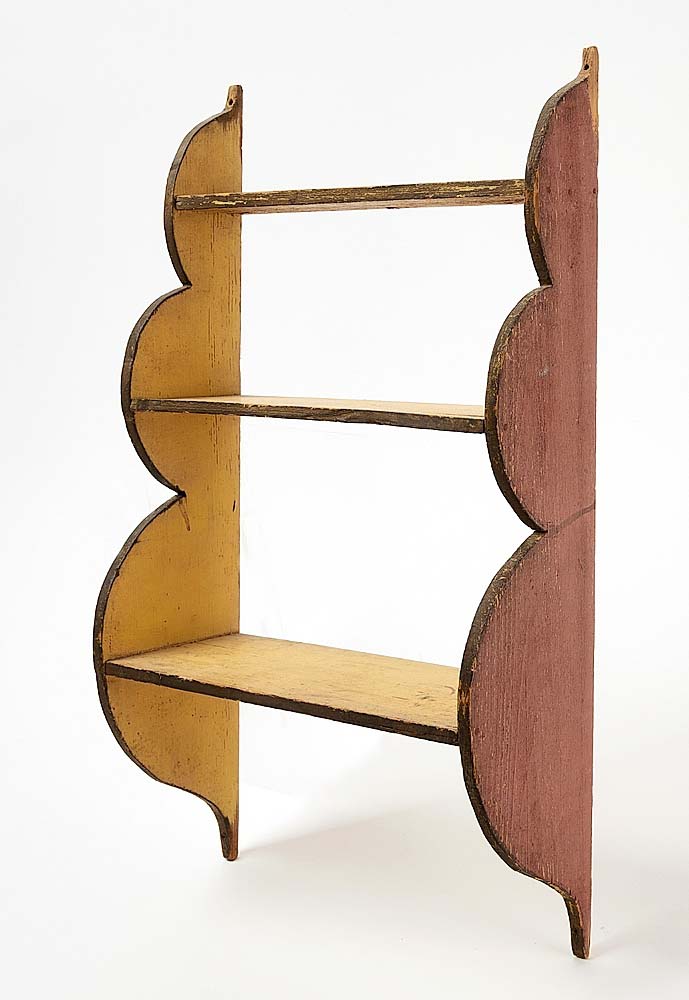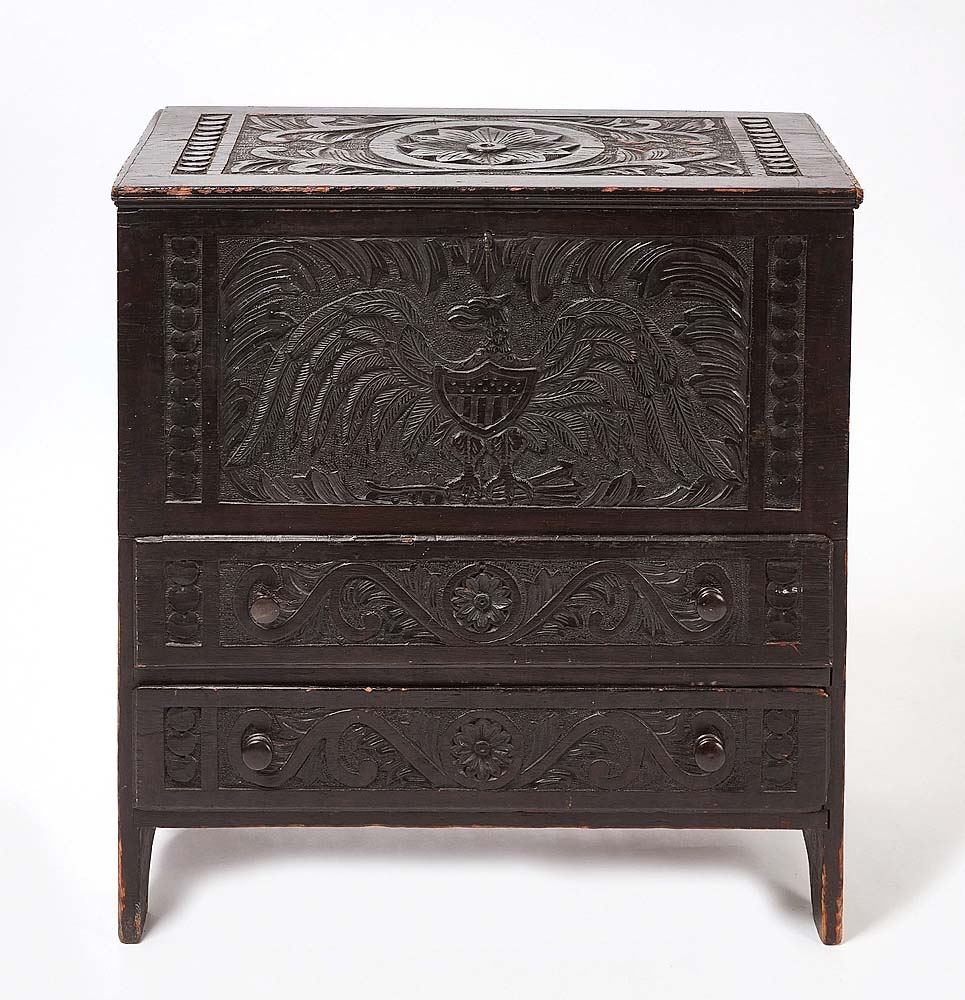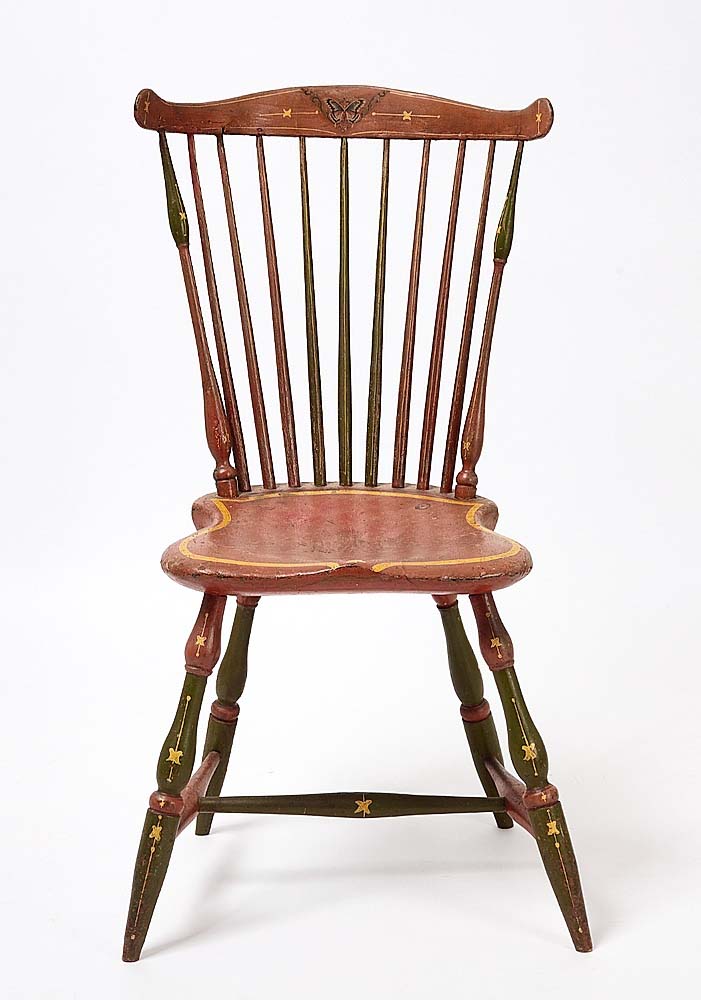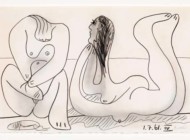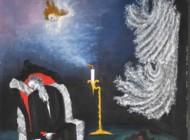
Leaping to the top of the sale was this molded copper stag weathervane, likely by E. G. Washburne & Company, New York, circa 1900. Measuring 22 by 25 inches, it realized $11,340 ($6/12,000).
Review by Carly Timpson
BRANFORD, CONN. — New England Auctions conducted its Summer Americana auction August 13-14. Featuring 631 lots of Americana and antiques, folk and outsider art, Native American antiques, decorative arts, toys and more, the auction realized $300,880 and had a sell-through rate of 95 percent. The online-only sale saw 700 registered bidders on the New England Auctions bidding platform and another 3,200 on LiveAuctioneers. Owner Fred Giampietro said that “it was a robust sale, with a good sell-through rate on the heels of the New Hampshire Antiques Show,” noting that “dealers did well restocking their collections.”
Achieving the two-day sale’s highest price was a leaping stag weathervane that sold to an important collector over the phone on the first day, which primarily featured Americana, folk and outsider art, Native American antiques, toys and other antiques. The molded copper deer had a cast metal head and antlers and was likely made by E. G. Washburne & Company in New York circa 1900. From the collection of Ron and Penny Dionne (Willington, Conn.), this 25-inch-long stag had an old re-gilded surface and was positioned leaping over a leaf-covered log for a total height of 22 inches. After several rounds of spirited bidding, it realized $11,340, falling just shy of its $12,000 high estimate.
As is to be expected in an auction of this variety, a large selection of American-made furniture spanning periods and styles crossed the block, and the sale’s second highest price exemplified this. Earning $7,150 against a $2,000 high estimate was a circa 1920 Wallace Nutting oak chest carved with Connecticut Sunflower motifs. The lidded chest featured finely carved front panels with flowers and leaves. The lift-top chest had two lower drawers, one of which was block stamped on the inside.

Carved with the Connecticut Sunflower pattern, this circa 1920 Wallace Nutting chest, oak, 42 by 45¼ inches, achieved $7,150 ($1/2,000).
A circa 1720 William & Mary period highboy, made in New England, rose to $4,032, selling to an important collector. Featuring six drawers over three on the base, this piece retained its original brasses and stood 63 inches high. Another storage unit, a pine blanket chest, carved with a large patriotic American eagle as well as decorative floral and vine motifs, brought $2,394. With a hinged top over two drawers, this late Eighteenth or early Nineteenth Century chest was finished in dark brown over red, the older red paint visible in some areas.
Storage options also included a scalloped wooden folk art shelf. The three-shelf unit, made circa 1900, was painted salmon and yellow and could be hung with the widest shelf at the top or at the bottom. Its wear was commensurate with its age, and bidders took it well beyond its $400 high estimate to achieve $2,470. With a similar color scheme, the paint-decorated fan back Windsor side chair that made $2,268 on a $400/600 estimate may have paired nicely with the shelves. The chair itself dated to circa 1780, but the red, yellow and green paint decoration was done in the Nineteenth Century.
Other home furnishings that exceeded expectations included a wrought iron fire screen, detailed with a grid of 25 ironwork farm animals. The screen was attributed to Ateliers Marolles, France, and was from the mid Twentieth Century. Also, a red R. Whiting grandfather clock from Winstead, Conn., chimed for $2,520. The clock’s dial was marked “R. Whiting Winchester,” it had spiked vasiform turned wood finials and its movement was from circa 1815.

Made by R. Whiting in Winstead, Conn., this 78-inch-high red grandfather clock had a circa 1815 movement and went out at $2,520 ($800-$1,200).
The artwork category also brought about some surprising results, with a primitive landscape painted in oil on pine board leading the selection at $3,900, nearly eight times its high estimate. This American painting showed thin stylized trees rising up in the foreground with pine tree-covered hills and a sailboat on the water in the background. Painted in New England circa 1900, an oil on panel titled “Home to Thanksgiving” brought $2,394, almost five times its high estimate. This wintry work showed a farmhouse scene with figures and cart-pulling animals outside the main home.
Pottery was led at $2,772 by a lot comprising four stoneware crocks, all detailed with cobalt blue birds. Each was American, some stamped “Whites Utica,” and made around 1890, and three of them had applied lug handles. They ranged in size from the smallest being 7¾ inches high with a diameter of 8½ inches, to the largest measuring 10½ inches high by 11 inches in diameter. The largest one was also stamped “3,” indicating its three-gallon capacity. An ovoid redware pitcher from the Nineteenth Century brought $2,520. The American-made pitcher was incised with a sprawling floral motif and stood 11¼ inches tall.
Toys were led by a Humpty Dumpty Circus set from the Schoenhut Company. This large size tent included figures such as clowns, acrobats, a plate spinner, a bear and a horse, as well as posting platforms and ladders for set up. In addition, the set sold with three related books, including the 2000 Schoenhut Toy Price Guide by Kaonis and Yaffee, Under the Bigtop with Schoenhut’s Humpty Dumpty Circus by Evelyn Ackerman and a signed copy of the circa 1910 Schoenhut’s Humpty Dumpty Circus from A to Z by Evelyn Ackerman and Fredrick E. Keller. Together, the circus set was pushed to $2,600.
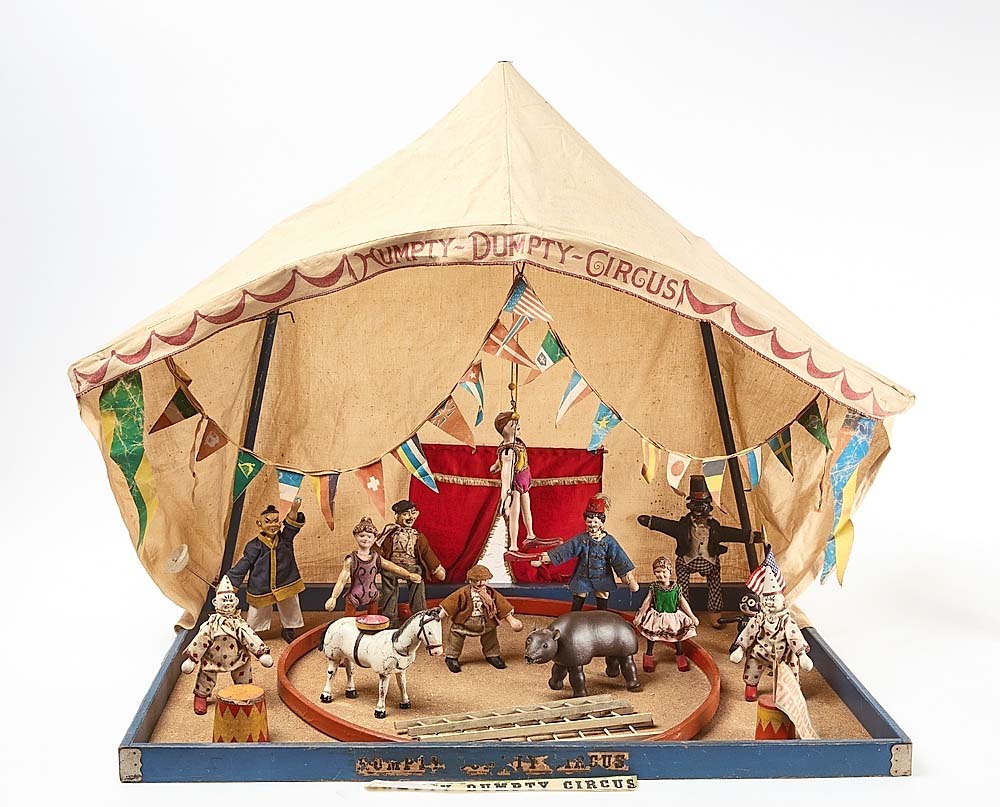
A dozen figures and three reference books were included with this Humpty Dumpty Circus set from Schoenhut, 36 inches high by 36 inches wide by 24 inches deep; it was claimed for $2,600 ($1,2/1,800).
An American Black cloth or rag doll from the Nineteenth Century also made an impression on bidders, rising well beyond the $750 high estimate to achieve $2,394. The fabric doll donned an original blue floral dress, underskirt, bloomers and bonnet. Each of these pieces had fine detailing, including lace trim and buttons or metal snaps; the doll’s stitched face had button eyes and she had small blue beads on her left ring finger.
Also surpassing a $750 high estimate to realize a surprising result was a collection of whale teeth. Housed in a nautically-carved wooden box, the 28 teeth were from circa 1900 to the mid Twentieth Century and many were numbered in ink at the base. Though some of the teeth had chips and losses, bidders liked them and they finished at $3,528.
Prices quoted include the buyer’s premium as reported by the auction house. For information, www.newenglandauctions.com or 475-234-5120.
